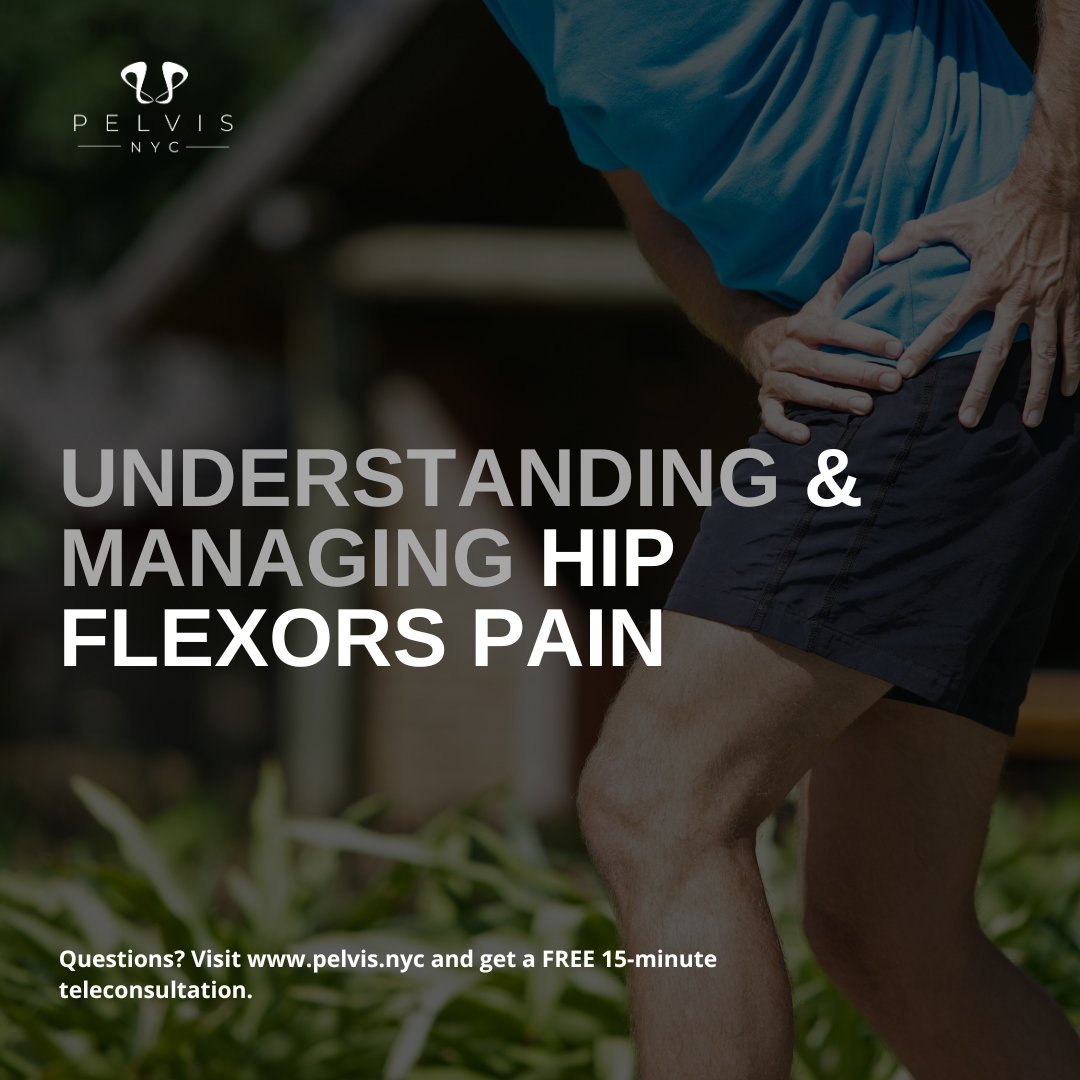Hip flexors pain, a specific type of hip pain, is a common issue affecting individuals of all ages and activity levels. Various causes of hip flexor pain include overuse, lack of flexibility, trauma, sudden movements like kicking or sprinting, prolonged sitting combined with weak hip muscles, and high-impact activities like dancing and running. Understanding the causes, symptoms, and treatment options for hip flexor injury is crucial for effective management and prevention.
As a physical therapist, I’m here to provide you with a comprehensive guide on hip flexor pain, covering its causes, symptoms, treatment options, and preventive measures. This blog aims to help you understand and manage hip flexor pain effectively, using evidence-based techniques and professional insights, including hip flexor treatment methods.
Hip Flexor Muscles
Hip flexors are a group of muscles located at the front of your hip that are responsible for lifting your knee and bending at the waist. The main hip flexor muscles include:
- Iliopsoas: Comprising the psoas major and iliacus muscles.
- Rectus Femoris: One of the quadriceps muscles that also assists in hip flexion.
- Sartorius: The longest muscle in the body, running from the hip to the knee. These muscles work together to produce flexion, allowing the hip joint to be flexible and support various movements.
Common Causes of Hip Flexor Strain
Understanding the root causes of a strained hip flexor is crucial for effective treatment. Here are the most common causes of hip flexor strain:
- Overuse: Repetitive activities such as running or cycling can lead to hip flexor strains. Overuse, lack of flexibility, trauma from sudden movements like kicking or sprinting, prolonged sitting combined with weak hip muscles, and high-impact activities like dancing and running are common causes of hip flexor strain.
- Acute Injury: Sudden movements or impacts can cause a hip flexor tear.
- Poor Posture: Prolonged sitting, especially with bad posture, can tighten the hip flexors.
- Weakness or Imbalance: A weak core or surrounding muscles can place additional stress on the hip flexors.
Symptoms of Hip Flexors Pain
Common symptoms of hip flexor pain include:
- Sharp or aching pain in the front of the hip, can be accompanied by muscle spasms.
- Mild pain can be managed with home treatments such as the PRICE protocol (protection, rest, ice application, compression, and elevation).
- Stiffness and reduced range of motion.
- Pain when lifting the knee towards the chest.
- Discomfort when stretching the hip flexors.
To know more about the symptoms of a hip flexor pain, check it out now!
Diagnosing Hip Flexor Pain
A physical therapist will assess your condition through:
- Medical History: Discuss your activity level, recent injuries, and lifestyle.
- Physical Examination: Checking for tenderness, range of motion, and muscle strength.
- Special Tests: Performing specific movements to identify the affected muscles[6].
Treatment and Management Strategies
1. Rest and Activity Modification
Reduce activities that exacerbate the pain. This doesn’t mean complete inactivity, but modifying your routine to avoid further strain.
2. Stretching and Flexibility Exercises
Incorporate gentle stretching exercises to improve flexibility and reduce muscle tightness. Effective stretches include:
- Lunge Stretch: Step one foot forward into a lunge, keeping the back leg straight. Hold for 30 seconds and switch sides.
- Butterfly Stretch: Sit with your feet together and knees bent out to the sides. Gently push your knees towards the ground.
For those dealing with a strained hip flexor, incorporating specific hip flexor stretches can help relieve pain and promote healing.
3. Strengthening Exercises
Strengthening surrounding muscles helps support the hip flexors and reduce pain. Focus on:
- Core Strengthening: Exercises like planks and bridges.
- Hip Strengthening: Exercises like clamshells and hip thrusts.
4. Manual Therapy
A physical therapist may use techniques such as massage, myofascial release, and trigger point therapy to reduce pain and improve mobility.
5. Heat and Cold Therapy
Apply ice to reduce inflammation in the acute phase of injury (first 48 hours). Afterward, heat can help relax the muscles and improve blood flow.
6. Education and Postural Training
Proper posture and body mechanics can prevent future episodes of hip flexor pain. Personalized advice from your physical therapist can address your daily activities and ergonomics[1].
Prevention Tips for Hip Flexors Pain
Preventing hip flexor pain involves maintaining a balance between activity and rest, and keeping your muscles flexible and strong. Here are some tips:
- Warm-Up Properly: Always warm up before engaging in physical activity to help prevent hip flexor strains.
- Most hip flexor strains are mild or moderate and can be treated with simple measures at home.
- Maintain Good Posture: Whether sitting or standing, keep a neutral spine to reduce strain on your hip flexors.
- Stay Active: Regular exercise helps keep your muscles strong and flexible.
- Listen to Your Body: Don’t push through pain. Take breaks and modify activities as needed[2].
When to Seek Professional Help for Hip Flexors Pain
If your hip flexor pain persists despite self-care measures, consult a physical therapist. They can provide a tailored treatment plan and help address any underlying issues contributing to your pain.
You may contact us for a 15-minute free teleconsultation for questions and inquiries by visiting our website.
Conclusion
Hip flexor pain can be challenging, but with the right approach, it is manageable. Understanding the causes, recognizing the symptoms, and following a structured treatment plan can alleviate your pain and return to your regular activities. Consistency is key; working with a physical therapist can provide you with the support and guidance needed for a full recovery.
Related Blog: Mystery of the Hip Flexors: A Physical Therapist’s Guide

